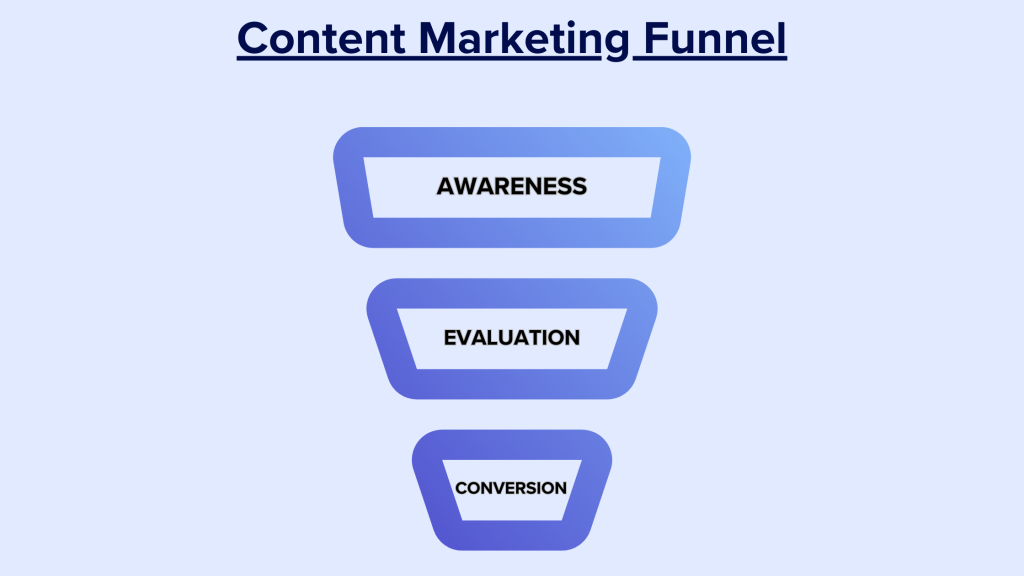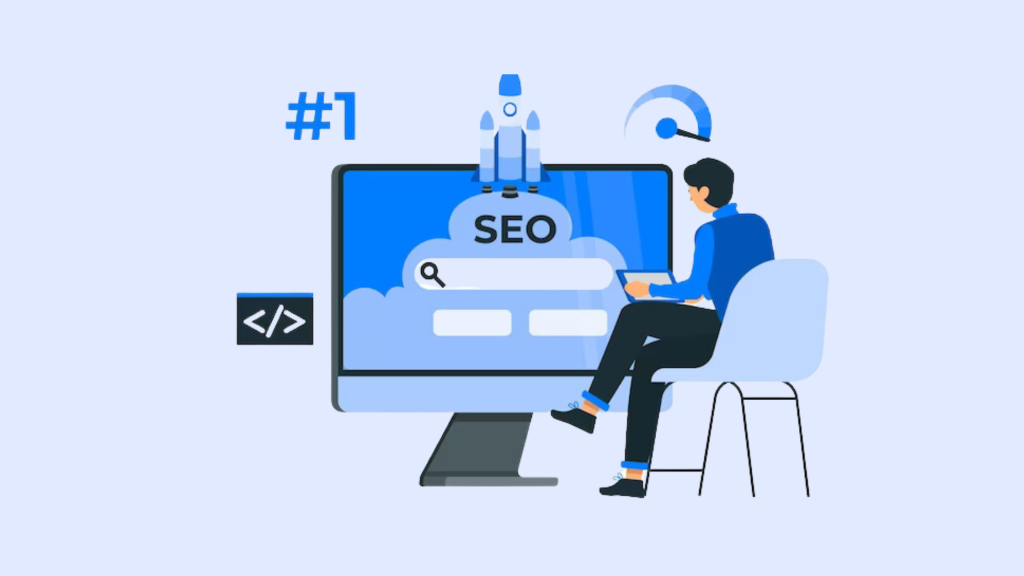Creating a Content Marketing Strategy That Works: Best Practices for Maximum Impact
- What is content marketing strategy?
- What is the need for a robust content marketing strategy?
- How to develop a comprehensive content marketing strategy for a business?
- What can you expect from a solid content marketing strategy?
- Key trends in content marketing in 2024
- The best practices to refine your content marketing strategy
Content is an indispensable part of an online marketing strategy. Everything you want to convey to your audience is conveyed through written and visual content. To nurture long-lasting relationships with your targeted audience, your content should be of high quality, appealing, and valuable to the targeted audience.
With the increasing significance of content in the success of an online marketing strategy, it is not possible to get the most out of your content without having a fully planned and well-implemented strategy. For creating optimized and people-first content, it is essential to put your best foot forward in creating an effective content marketing strategy.
What is a content marketing strategy?

Content marketing is the development, promotion, and distribution of relevant content—including blogs, newsletters, white papers, social media posts, emails, videos, and the like—to current and potential customers.
The consistent use of content marketing helps establish and nurture relationships between businesses and their prospects. Whether you are just starting a new business or refreshing an existing one, it is crucial to create and share the content that your audience wants. In this guide, we will help you understand what content marketing is, types of content marketing, examples of content marketing, and how to get a solid content marketing strategy.Before we try to understand content marketing, it is important to know what content marketing is not.
What content marketing is not; –
- Publishing a thin piece of content with the least searchability and hoping people will find it.
- It is also not aimlessly creating a piece of content with keywords.
Content marketing is not just about pursuing people; it is about providing something of value to them. The searchability of your site will increase only when it provides valuable information to the public.
Thus, content marketing strategy can be defined as purposefully tailoring your content for pages, videos, eBooks, and posts to your target audience so that they find the content and your brand in an inbound way rather than an outbound way. In other words, content marketing involves the creation and sharing of online material that may or may not explicitly promote a brand, but it is intended to stimulate interest in the targeted audience for its products and services.
What is the need for a robust content marketing strategy?
A robust content marketing strategy is the need of the hour for your online success. It is essential for an online business, and it proves to be beneficial in manifold ways.
Improve brand awareness
Shareable content is a great way to boost awareness about your brand and business. When people share your content (including articles, blogs, infographics, and Instagram posts), they will share it through their social accounts, email, or word-of-mouth as a recommendation. It will expose your brand to a wider audience and bring more traffic to your site.
Boost SEO efforts
Google has emphasized the importance of content in SEO from the very beginning. Google rewards sites with helpful content with higher rankings. SEO and content cannot work in isolation and both elements complement each other in a successful marketing strategy. Quality content is the key ranking factor for staying at the top of search engine results pages. It helps to generate high click through rates, backlinks and a great user experience.
Generates leads
When people buy goods and services online, their decision is usually based on the content in the form of usability, features, and reviews of the product. Most people research online before buying any product from online or even local stores. Statistics reveal that 50% of Millennials trust product recommendations from influencers.
Syndicated content including content on social networks, online publishers, comparison sites, blogs, and many other types of sites helps to increase brand engagement and influence sales. User-generated content also have a huge impact on buyer decision-making and eventually generate sales for a business.
How to develop a comprehensive content marketing strategy for a business?
Now that you have understood the utmost importance of a well-planned content marketing strategy for your online brand, it is time to learn how to do it. Here we have explained the essential steps for creating a robust content marketing strategy for your business.
Steps in creating a content marketing strategy
Step 1: Define your ideal target customer

The most important goal of content marketing is to attract targeted customers. By targeted customers, we mean the people who intend to buy your offerings. If you don’t target the right customers, it will lead to wastage of efforts and resources and will eventually lead to low conversions. Thus, the first and foremost step is to define who your targeted customers are. Here are some tips on how to define your targeted audience:
1. Choose your niche
You cannot advertise to everybody, and you must not. If you target everyone in your content marketing strategy, it will be a waste of time, money, and efforts. Also, it will make your customers think that their personalized needs and preferences have not been acknowledged by your brand. For instance, if you are selling higher educational loans for studying abroad, your targeted audience will be parents with at least one child (pursuing or planning to pursue higher education in a foreign land). Thus, your niche helps you define your targeted audience.
2. Use analytical tools
The next thing is to consider the demographics of the targeted audience: gender, age, education, income, and political persuasion. All these factors affect the type of content they choose to consume and where they consume it. For instance, professionals in the age group of 25 to 60 are highly likely to be on LinkedIn. Similarly, teenagers and college students are highly likely to be on Instagram. All the social media platforms have analytical tools that can be easily used to identify demographics and use them to create an effective content marketing strategy.
The landing page is another important platform to recognize your targeted audience. If a person who landed on your landing page has moved to a specific point (say, the contact us page or downloading the catalogue), it can be a good indicator of whether your content efforts are working and bringing results. A form can be provided on the landing page to ask potential customers to share their details if they are interested in further communication.
3. Creating buyer personas
Once you have collected all the quantitative and qualitative data, the next step is to use it to define the marketing persona or buyer persona based on the qualitative and quantitative information you have collected. These marketing personas will help you create and deliver the content that will be most relevant and useful to your targeted audience. While creating the buyer persona, make sure it includes all the relevant details, such as age, gender, education, and income, as well as specific personalities, values, attitudes, interests, and hobbies.
It will help you define your audience by better understanding what they need, which will surely lead them to buy the product or service you are targeting them with. A marketing persona will also help you identify what kind of content they consume, including audio, visual, and written, and what platforms they are using to consume them, so you can create a content strategy accordingly.
Step 2: Map out the content marketing funnel

Most people don’t buy products the first time they visit the site. The aim of a content marketing strategy is to build connections with potential buyers or visitors that eventually lead them to make a purchase.
Content mapping is the process of thoroughly understanding your audience so you can create content for each stage of their journey towards buying your offerings. It focuses on targeting every aspect of the content marketing funnel. Only a few people move straight from discovery to buying. They usually first discover your site and spend a few days or months thinking about it before buying it. Thus, it is important to understand your targeted audience journey to create a solid content marketing strategy. There are many stages of the content marketing funnel. Here, we have shared each stage in detail as follows:
How do you create a winning content marketing funnel?
The content marketing funnel visualizes the journey a potential customer goes through, starting from exposure to the content of the brand to conversion (taking an action such as downloading an eBook, subscribing to a newsletter, downloading an app, and more). The content in different stages supports the different aspects of the customer journey, and good-quality content always pushes them closer to a purchase.
Traditionally, there are four stages of the content marketing funnel, including awareness, evaluation, purchase, and delight. Each stage serves a specific purpose in the customer’s journey. A comprehensive content marketing funnel addresses the following questions:
- What are our goals, and what kind of content needs to be created to attain them?
- How can the efficiency of content be measured?
- Where can I improve my content strategy?
1. Awareness
The first stage of the content marketing funnel is regarded as awareness. At this stage, you should assume that the customer is unaware of your company, products, or solutions provided by you. Your job is to create awareness of your offering among the audience, which is just initiating their journey with you and entering the content funnel.
Top-of-funnel (TOFU) content focuses on pulling the attention of the audience by educating and informing them about your products, services, or solutions. For creating awareness, you can use the following types of content:
- blog posts
- Social media posts
- Infographics
- Videos
- E-books
- Podcasts
You don’t need to use each of the above content types. Just test any two to three of them and see if they resonate with your intended audience, then track their success.
With each piece of content, keep an eye on whether the prospects are viewing, interacting with, and sharing the content. Has there been any follow-through after the interaction with the content, such as replying to comments on social media posts, thanking for reading the blog, etc.?
To analyse the intractability of the content, you can use metrics such as time spent on page, number of reviews, and bounce rates. If you find that your content drastically falls short or doesn’t address the audience, try other content types or make changes to your strategy.
2. Evaluation
The middle funnel is where potential customers determine whether they need your product or services or not. At this stage, you need to look for ways to build rapport with clients. For this, you need to focus on content that conveys why they should buy your products, services, or solutions. Some of the effective content types that help convince your audience to buy your offerings are:
- Case studies
- White papers
- Emails
- Useful resources/downloads
- Events/webinars
Once you have developed and distributed the above content pieces, you need to analyse if they are serving the intended purpose.
- Are leads turning into sales with this content?
- Are you generating any new sales or leads from this content?
- Is this content helping me achieve my goals?
Good-quality content helps move a prospect towards a purchase or your marketing goal. However, one needs to use varied content pieces and have a comprehensive content strategy in place that naturally pushes your prospect forward in the content funnel.
3. Conversion
As the name suggests, it is the stage when people act or leads turn into sales. It is important to give clear reasons to your clients, so they feel confident in buying your products and services.
- Customer reviews
- Demos
- Product comparisons
- Free trials
At this stage, you will get a chance to really talk about your products and services. By providing side-by-side comparisons of similar products or reviews by other customers, you can encourage potential customers to buy your products, services or solutions.
Keep in mind the following:
- There should be a clear call to action in your content (such as downloading a book, subscribing to a newsletter, buying our products, etc.).
- Make sure the buying process is easy and quick.
- The content should be personalized and targeted to the right audience at the right time (or phase) in the journey.
Delight
The delight aspect has not been part of the conventional content marketing funnel. However, many companies have taken more steps to retain their customers in the future. It means your work doesn’t end with turning sales into leads; it is an ongoing process. Your content strategy should aim at consistently engaging the audience to nurture relationship with them.
Step 3: Generate content ideas and establish a brand voice

Effective content planning is about generating ideas that stimulate the interest of the audience in your offerings, with the aim of establishing a brand voice. It involves brainstorming to say something unique and interesting to capture people’s attention.Look at your existing content and analyse what’s performing well. What topics are getting the most traffic. Analysing your competitor’s content strategy is another effective way to get content ideas for your strategy. Here are some tips for generating unique ideas for your content marketing strategy:
- Analyse competitor’s content strategy to get unique ideas
- Monitor industry trends to identify trending topics
- Use keyword research to identify topics that people are searching for online
- Re-purpose existing content by turning it into different format such as an infographic, a video, or a podcast.
Step 4: Create a content calendar to maintain consistency

Your content marketing strategy will scale only if you consistently publish unique and thought-provoking content. A simple content calendar can help you attain consistency in your content publishing. A content calendar is a written schedule of when and where to publish upcoming content. They usually have the following information: upcoming content pieces, status updates, content channels and topics, etc.
You can use a project management platform like Trello or Basecamp to breakdown content marketing campaigns into various tasks, and these tasks can then be assigned to your team members along with due dates. Once you have created a workflow process, it will be easy to ensure that each piece of content is published consistently. You can also use a simple calendar as a basic spreadsheet. Of course, it will have fewer features than a project management platform.
A content calendar should have a share option, especially if you’re planning content together with the whole organization. For instance, you can create a calendar template with the free Google Sheets tool, which allows anyone with authorized use to edit the sheet on their own computer to add comments and ideas.The content calendar is generally created as per your team’s specific needs; however, it should include at least the following information:
- The channel where content will be published
- Types of content
- The topic
- The date and time for publishing
- The person in charge
- Follow-through: to know if the content is published according to schedule?
Step 5: Test and measure results
Trends and topics constantly change in the world of the internet. What was relevant last week may have been replaced by something more relevant. Apart from that, search engine rankings are also always variable, so it is important to keep an eye on how well your content is performing in search results. For those who are not number savvy, you don’t need to be a data analyst to understand if your content marketing strategy or a specific piece of content is contributing to your higher goals.
With the easy availability of tools like ESL Ranks Pro, you can easily understand how everything is going and what action needs to be taken in the future. One must check the page views and bounce rate of the content, such as articles and blog content, frequently. Use Google Console to check your ranking as well as other analytical factors to gauge the effectiveness of your content. Also, keep a keen eye on competitors using ranking tools or use Google Trends to know trendy topics to write about next.
Measuring the effectiveness of content marketing results is as tricky as content marketing is a long-term game plan, and you cannot expect immediate results. Still, there can be some signs that indicate your content marketing strategy is working well.
- You are getting high-quality leads that close quickly.
- Your brand awareness has increased (more social media mentions, backlinks, brand queries, etc.).
- Your website has gained more traffic.
It is important to monitor progress over a given period and tweak the content marketing strategy at regular intervals, so it’s always up to date.Apart from brand KPIs, it is also important to track specific campaigns so that you can evaluate what content performed the best and put efforts into producing more of those formats and ideas. Most marketers use Google Analytics to track the performance of their content marketing efforts; however, you can also use third-party tools like ESL Ranks Pro to measure these metrics. Here is an infographic to help you in measuring the effectiveness of your content strategy.

What can you expect from a solid content marketing strategy?
It takes time to get results from your content marketing efforts, but slow and steady wins the race. Here is what you can expect from a solid content marketing strategy:
- Slowly but steadily, there will be an increase in quality traffic to your site.
- Your click-through rates and conversion rates with content will increase.
- Your organic keyword ranking will grow steadily.
- Even if you are just beginning, you will be able to get great results with quality and consistency.
- You need a solid content strategy that serves the needs of your target audience and encourages them to act.
Key trends in content marketing in 2024
As we enter 2024, the dynamics of content and online consumer behaviour will continue to shape the way businesses approach content marketing. To leap ahead of the competition, it is important for marketers to recognize emerging trends as well as adopt the best practices for shaping their content marketing strategy in 2024.
1. The dominance of video content

Video content dominated in 2023, and it is expected to continue its dominance in 2023. People have shown great love for short videos in the past few years, and they will continue to gain popularity in the coming years. Here are some interesting stats.
73% of consumers prefer short-form videos to search for products or services.
57% of Gen Z prefer short videos to learn about products and services.
To leverage this trend, brands should invest in short-form videos, reels, and interactive content to capture the attention of the targeted audience across platforms. It is also an effective way to share a brand story with a wide range of audiences.
2. Personalization of the content

Personalization is now much more than a rating or recommendation. In 2023, buyers used a varied range of personalized content, ranging from tailored content recommendations to individualized email campaigns. For this, you need to use data-driven insights to understand audience preferences and deliver content to suit their specific needs and interests.
3. User-Generated Content

User-generated content (UGC) is an effective tool to build the authority of your brand and business in the community. The brands should encourage their audience to create content related to their brand.
4. Podcasting

Audio content and podcasts have witnessed a tremendous rise in recent years with more than 155 million Americans listening to podcasts monthly. Podcast gives users the convenience of listening to audio on the go without the need to glue it to their devices. It is prudent to consider incorporating podcasting into your content strategy to reach wider audience.
5. Conversational marketing with chatbots

Chatbots are now evolving beyond the traditional role of customer support. They are playing a key role in communication and marketing. By using char boats, businesses can engage with potential customers in real time, providing them with immediate responses and guidance related to their customer journey.
6. SEO and Content Quality

Search engine algorithms are constantly evolving. Search engines like Google are giving more importance to helpful and people-centric content than ever. One needs to work on a strategy that makes use of comprehensive keyword research, creates content that addresses user intent, and prioritizes the user experience.
7. Interactive Content Formats

Interactive content formats have also gained huge popularity among most brands in recent years. Most online businesses are using a range of interactive content formats to engage with their audience, such as polls, quizzes, and surveys.
8. AI, automation, and the metaverse

AI has been one of the biggest concepts in 2023, and it is expected to evolve in 2024. AI technology is allowing marketers to create content faster; however, it isn’t good enough to write all of your original content, but it can certainly assist in your content marketing efforts.
Automation is another smart way to streamline certain aspects of your content strategy. AR, VR, and the metaverse are currently only viable for large enterprises, but there are plenty of ways to use automation and AI to aid your content marketing strategy.
Best practices for a successful content marketing strategy
For a successful content marketing strategy, the brands need to reach their customers in a way that feels natural and intentional. A robust content marketing strategy can help you attain your branding goals. Here are some of the effective techniques to enhance your content strategy:
1. Invest in brand storytelling across multiple platforms
Consistent storytelling is a way to establish your authority in the online world. Invest in confident brand storytelling across various platforms. Your story must be unique and appealing, reflect your brand values, and resonate with your target audience.
2. Use data insights to refine your content marketing strategy
Leverage data analytics to get insight into audience behaviour and use these insights to refine your content strategy, personalize user experiences, and measure the effectiveness of your campaigns.
3. Create an agile content marketing strategy
As the digital landscape is always evolving, it is always recommended to create an agile content marketing strategy to easily adapt to emerging trends and capitalize on new opportunities.
4. Collaborate with influencers
Collaborating with influencers and leaders in the industry is a great way to increase your content reach as well as enhance your brand’s credibility. Make sure your content is optimized for various channels and devices. A seamless omnichannel presence helps to improve the user experience and expand your reach across different audience segments.
5. Focus on human centered content
Your content should be human focused rather than search engine- or business-focused content. It should be able to connect with the audience in any way, such as by informing, guiding, entertaining, or helping them.You can consider Google’s guidelines to evaluate if you are producing helpful, reliable and people first content.
6. Optimize your content for search engines
Optimizing your content for search engines is essential to making it searchable by your targeted audience. It is important to conduct extensive research to find relevant and high-volume keywords and integrate them naturally into your content. One must implement a comprehensive SEO strategy to optimize all the content of a brand over a website, social media platforms, and YouTube channels.
7. Refine your strategy constantly
It is important to regularly assess your content marketing strategy using various tools and techniques. One should analyse different content channels and formats to know which one is working best for a brand. Keep on experimenting with new trends to improve your marketing strategy.
Keep in mind that content marketing is an ongoing process that requires consistent effort. By dedicating the necessary resources and refining your strategy from time to time as per the latest trends, you can create an effective strategy that drives sustainable growth and success for your business.







